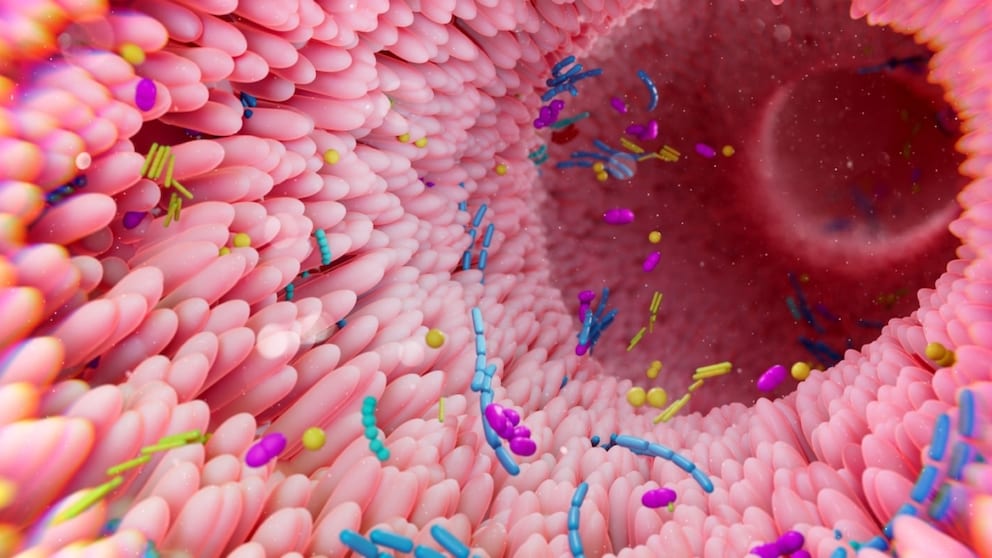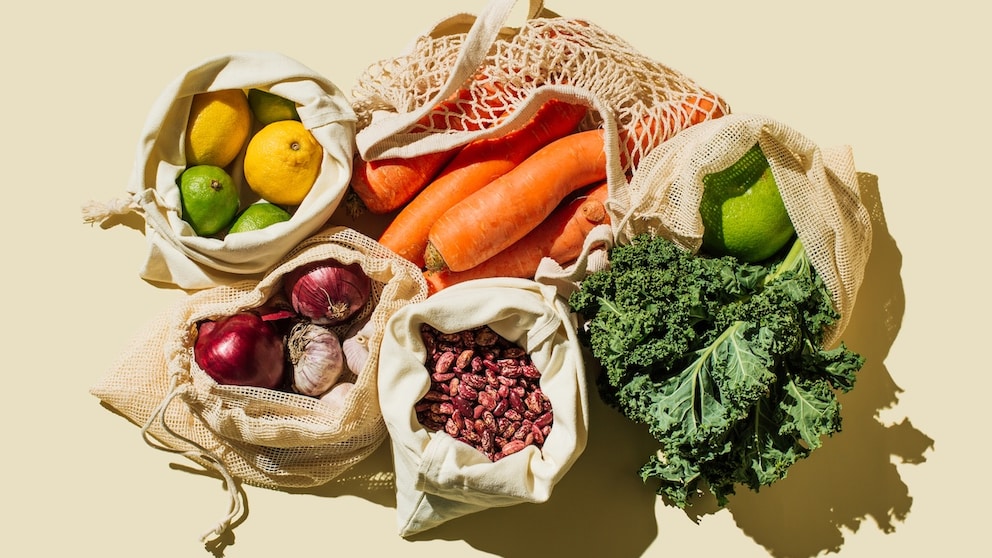April 10, 2025, 9:46 am | Read time: 6 minutes
Diabetes, obesity, and cardiovascular disease are classic health problems in industrialized countries — and they are often linked to an imbalance in the intestinal flora. To counteract this, a research team developed the so-called Restore Diet. This focuses on natural, unprocessed foods and avoids wheat, milk, and highly processed products. The aim is to strengthen the intestinal flora again.
Back to the origin: The Restore Diet, also known as the “Non-Industrialized Microbiome Restore Diet (NiMe-Diet),” was developed by microbiome researchers to restore balance to intestinal flora that has become unbalanced due to industrialized nutrition. This is because it is linked to the development of chronic diseases, which are on the rise in Germany and require new prevention strategies.1 The research team’s approach: a predominantly plant-based diet, accompanied by as little processed food as possible.
Overview
What Is the Restore Diet?
Processed foods can have a negative impact on the gut microbiome — the entirety of the bacteria living in the gut. Moreover, as a result, they may be partly responsible for the increase in chronic diseases. The Restore Diet is a nutritional approach that emphasizes a plant-based diet while largely avoiding animal and processed products. The Restore diet is based on the typical diet of the inhabitants of rural regions of Papua New Guinea. Studies have shown that this population has a greater bacterial diversity in the gut than in Western societies.2
While vegetables, pulses, and other unprocessed plant-based foods are highly valued, dairy products, beef, and wheat are removed from the diet. The aim is to rebalance the gut microbiome in order to reduce the risk of chronic diseases such as cardiovascular disease and type 2 diabetes.3

Who Invented the Diet?
The Restore Diet was developed by an international research team, including scientists from the University of Hohenheim in Stuttgart. The aim was to develop a nutritional concept that specifically aims to restore the natural gut microbiome. The central question for the researchers was whether the microbiome can be regenerated in an industrialized environment. In modern societies, many people are increasingly turning to highly processed foods that are often high in sugar and fat and low in fiber — with sometimes serious consequences for their health. These consequences range from digestive issues to chronic diseases.4
Study Examines the Effectiveness of the Diet
The scientists conducted a randomized, controlled study to test whether the Restore diet can actually lead to desirable changes in the gut microbiome. The study involved 30 healthy adults who were, on average, 28 years old and of normal weight. They ate according to the Restore Diet principle for three weeks and according to their everyday diet for three weeks.
The results were remarkable: although the diversity of bacterial species decreased, the proportion of health-promoting bacteria such as Bifidobacterium and Faecalibacterium increased. Pro-inflammatory genera such as Bilophila also decreased. The intestinal mucosa also benefited from the change. The diet also had other positive effects:
- They lost 1.4 percent of their body weight
- Their total cholesterol level fell by 14 percent
- LDL cholesterol, which is considered unfavorable to health, fell by 17 percent
- Fasting blood sugar fell by six percent
- Diabetes markers such as insulin sensitivity improved
Dr. Benjamin Seethaler, research associate at the Institute of Nutritional Medicine, explains further in a press release: “The diet also led to increased production of health-promoting short-chain fatty acids (SCFAs) and anti-inflammatory and antioxidant substances in the blood plasma. One example of this is indole-3-propionic acid, which is associated with a lower risk of type 2 diabetes and arteriosclerosis.”5
Incidentally, the positive effects of the diet were reversible: after returning to the usual diet, the microbiome and biomarkers returned to their original state.
Classification of the Study
The study’s design is of high methodological quality. Although the number of participants is manageable, this is usual for nutritional interventions, especially in complex study settings. One limitation is the short duration of the intervention, which does not allow any conclusions to be drawn about the long-term effect. Furthermore, the Restore Diet was only an approximation of traditional diets — a complete replication is not possible under Western living conditions.
The Principle of the Restore Diet in Detail
Which foods exactly are allowed in the Restore Diet and which are not? The principle here is as original and untreated as possible. The Restore Diet is based on traditional forms of nutrition, such as those found in Papua New Guinea. The focus is on foods that actively promote intestinal health. The focus should, therefore, be on plant-based, high-fiber, and less processed products.
Foods allowed in the Restore Diet
- Legumes (beans, lentils, peas, lentils, nuts)
- Soy products (tofu, tempeh, edamame)
- Whole grains (brown rice, quinoa, tabbouleh)
- Fruit (berries, apples, pears, bananas)
- Nuts and healthy fats (olive and rapeseed oil)
- Root vegetables (sweet potatoes, Jerusalem artichokes, carrots, beet)
- Water and unsweetened teas
These Foods are Taboo
The Restore Diet removes wheat products and gluten, milk and dairy products, sugary and fried foods, alcohol, and soft drinks from the diet. Instead, plant-based milk alternatives and unsweetened teas can be used. Black coffee is allowed in small quantities, but milk-based variants such as cappuccino, latte macchiato, and the like are taboo.
Processed meats are also excluded from the diet. However, you don’t have to give up animal products completely: High-quality meat and fish are allowed — but only in small quantities.

How the Portfolio Diet Works – and Who it is Suitable for

Dairy Products Are Good for the Gut — Apparently with One Exception

Certain Intestinal Bacteria Causes Sugar Cravings
A Typical Meal à la Restore Diet
- Warm millet porridge with apple and cinnamon prepared with water or unsweetened plant milk
- Lunch: Gumbo stew made from carrots, celery, peas, white beans and quinoa 6
- Dinner: baked pork fillet, roasted Jerusalem artichokes, potatoes and coleslaw
- Snack: Dried fruit (e.g. apricots), chia and coconut pudding with berries, dark chocolate with a high cocoa content (at least 85%), fresh fruit and vegetables

